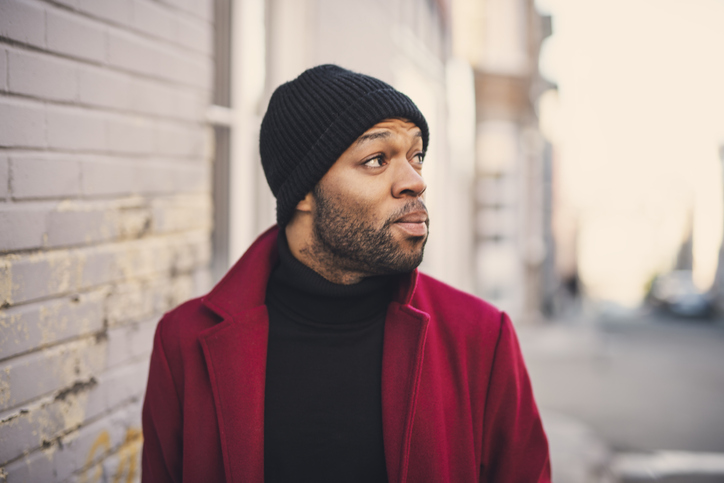By Peter Feniak
Over the six decades of her career, the singer-songwriter has become a Canadian music icon
Did young Sylvia Tyson ever sense that she was destined to become one of Canada’s most admired singer-songwriters? “I don’t know about destiny, but at one point I told my parents, ‘I’m going to move to Toronto and become a folk singer,’” she says. “And, actually, their reaction was pretty enlightened for the late ’50s—they said, ‘Well, if it doesn’t work out, dear, you can always come home and get married.’”
Tyson never did turn back, and she has since been inducted into the Canadian Music Hall of Fame (with Ian Tyson), the Canadian Country Music Hall of Fame, and the Canadian Songwriters Hall of Fame and named to the Order of Canada. Her most recent album, At the End of the Day (November 2023), has been highly praised. Tyson has also been a music executive, a broadcaster, and a novelist, but the singing came first.
Sylvia Fricker (her maiden name) began singing in her hometown of Chatham, in southwestern Ontario. “It was expected of me,” she says. “My mother was the organist and choir director at Holy Trinity Anglican Church. We always had more sopranos than we knew what to do with, so I sang alto, and if our tenor didn’t turn up, I sang tenor.”
Her mother, Phyllis Fricker, was also a teacher, a painter and, Tyson says, a “classically trained pianist, a Chopin specialist.” Her dad, William Fricker, worked for the T. Eaton Company (selling appliances) and played music by ear. “He used to take me to the little country churches around Chatham where he’d repair the pump organs,” Tyson recalls. “He’d get all the bugs out and finish by playing ‘Roll Out the Barrel.’” Her siblings (two sisters and a brother), she adds, “are all pretty creative in their own ways.”
In Chatham, Tyson absorbed night-time-radio rhythm-and-blues from nearby Detroit. And in a high-school poetry anthology, she discovered folk.
“There were two or three of the old English ballads—‘Sir Patrick Spens,’ ‘Lord Randall’—and some soul with foresight had put lines of music with the poetry,” she says. “I thought, ‘These are songs; I’m going to try that out.’”
Folk music was on the rise at the time. In 1958, The Kingston Trio sold more than three million copies of an upbeat version of a hangman’s ballad called “Tom Dooley.” Arriving in Toronto, Tyson joined in some early sing-arounds. “I was just getting my feet on the ground when I met Ian,” she remembers.
Ian Tyson, a brash westerner and balladeer, was interested in a possible singing partner. “We started doing the odd thing together in the little coffee houses,” she says. Canada’s great folk duo was born—the powerful headliners Ian & Sylvia. And in 1964, they married.
Greenwich Village
Ian & Sylvia brought energy and freshness to folk music. Onstage, Ian played guitar, Sylvia, the autoharp. Later, accompanists joined them. But mostly it was their voices. The late New York artist Suze Rotolo once said: “Her voice was timeless, almost otherworldly. Ian was very handsome; Sylvia was very beautiful. Together they had a glow about them.” Ian described their famous harmony this way: “I had a fairly big baritone voice. She had that vibrato thing. We just opened our mouths and sang. Under the right conditions, man, our voices could soar.”
They rose to the top of the early-’60s Toronto folk scene. “We decided ‘Hey, it’s time to go to New York.’ You don’t think about it; you just do it,” Sylvia says. “The first door we knocked on was Albert Grossman’s.” Grossman, an aggressive folk-club owner from Chicago, was becoming a powerful figure in the folk movement. “We auditioned for him in an old converted mansion on Central Park West.
He said, ‘Well, I really like you, but I just signed this trio and I’m not sure how much time I’ll have.’” Grossman was assembling future million-sellers Peter, Paul, and Mary. He would also manage up-and-comer Bob Dylan, plus Richie Havens, John Lee Hooker, Janis Joplin, The Band, and Gordon Lightfoot. He signed Ian & Sylvia, too.
From their base in New York’s Greenwich Village, Canada’s folk stars began recording for the prestigious Vanguard label. They became favourites with college crowds, playing campuses everywhere. And, in that magic time, they also became songwriters.
Sylvia remembers: “We were hanging with Bob Dylan, and he was writing about a million songs a minute.
Being pretty brash, we thought, ‘If he can write songs, we can write songs,’ and we did.” Their first efforts were golden. At the Hotel Earle on Washington Square, Sylvia wrote a “will I or won’t I?” love song called “You Were on My Mind.” In 1965, the San Francisco folk group We Five turned it into a chart-topping, million-selling smash hit. Ian’s first songwriting effort, a lonesome ballad called “Four Strong Winds,” became a Canadian anthem.
But cooler winds began to blow on the folk-music revival. Ian & Sylvia kept recording, broadening their styles and including works by songwriters like Dylan, Lightfoot, and Joni Mitchell. But The Beatles had ushered in the British Invasion. Top folk-singers took note and “went electric,” creating folk-rock. A country-rock surge came later, but too late for Ian & Sylvia’s 1968 Nashville album, an early classic.
In restless times, the duo changed record labels and hired backing bands, and, ultimately, Ian landed a Canadian TV series hosting popular country singers. Sylvia was an occasional presence—the duo’s son, Clay, born in 1966, got much of her attention. Ian, yearning for the cowboy way, bought acreage an hour east of Toronto and began ranching. With Sylvia in Toronto, the couple drifted apart. Their 1975 divorce was described as amicable.
With their songwriting growing over the years, each released solo albums with some success. Sylvia’s song “River Road” became a hit with US country star Crystal Gayle. Her “Smiling Wine” was on the radio. She became the host of the roots music show “Touch the Earth” on CBC-Radio.
Her acumen was welcomed on several music-industry boards. In the ’80s, she created her own label, Salt Records, named from her song “Sugar for Sugar, Salt for Salt.”
As the 1990s began, she joined the novel singing group Quartette, which comprised four gifted female singer-songwriters. They performed together well into the 2000s. The collegiality of Quartette suited Tyson. Solo performance had long challenged the cerebral singer. “I’m not a natural performer,” she has said.
“Anything I do onstage I learned to do.” Some simply called her shy. “I’m well aware of that shyness,” long-time friend and music writer Larry LeBlanc has said, “but she is inspirational—the bravest person I know.”
Today, Tyson says, “I would probably never have been a solo performer if I hadn’t been a songwriter. It was really wanting people to hear my songs: the only way to get them to hear them would be if I got up there and sang.” She has written “close to 200 songs,” but she says that song-writing “gets harder. You whip up a couple early and you think ‘Oh, this is easy.’ But [the song] has to be four minutes long; you have to pack a lot into those lines. You start to be more critical of what you’re writing.”
A lifelong avid reader, Tyson also turned her hand to writing fiction. “I found the freedom of writing prose to be quite extraordinary,” she says. “I had to rein myself in not to go totally nuts.” Her novel, a family saga titled Joyner’s Dream (Harper Collins, 2011), is dedicated to her late friend Canadian novelist Timothy Findley.
Findley’s partner, Bill Whitehead, helped edit the book. Fiction continues to fascinate her. “I’ve written three murder mysteries—as yet unpublished,” she laughs.
Life Changes
Her song “You Were on My Mind” is still widely heard and recorded. A year after the We Five version, a singer who called himself Crispian St. Peters (born Robin Smith) took it to the top of the charts in the UK. He also briefly claimed to have written the song. “And for some reason,”
Tyson says, “it keeps being recorded in Italy.” Publishing royalties helped buy her large Victorian home in Toronto long ago. “That song’s paid the rent a few times for sure,” she says. Her leafy neighbourhood reminds her of the street she lived on in Chatham—“tall trees on either side of the street…not a lot of traffic.” She walks those quiet streets for fitness and says: “I work out—you know, floor exercises. Mainly at home.” The hard part, she jokes, is “not so much doing floor exercises; it’s getting up off the floor.”
In close touch with her siblings, Tyson hosts an annual Christmas gathering. (“I’m the one with the large-enough house.”) Her son, Clay, a Toronto-based singer-songwriter, is now “back and forth” from Alberta.
“He inherited an old stone house on Ian’s property [near Longview, Alta.— Ian died in 2022],” she says. “He’s very involved in getting it into shape. He loves being out there.” His current passion is “building instruments from scratch.”
It’s rare to see Tyson onstage these days, but on May 23, 2024, she appeared at a packed Massey Hall in Toronto for the life celebration of her long-time friend Gordon Lightfoot. A star-studded roster sang Lightfoot songs. Tyson was different. Encouraged by Lightfoot’s wife, Kim, she created a special moment, singing “At the End of the Day.” “When I think of the good times, all the hard times fall away,” she sang. “It’s the good times I remember at the end of the day.”
“That’s pretty much my philosophy,” she says. “We all went through our life changes at one point or another. You don’t sweat the bad stuff. You hang on to the good stuff.”
Her recent album went high on the Americana charts, a category that includes gospel, folk, country, roots music, and blues. She’s comfortable in that catch-all zone. “I’ve pretty much done whatever I wanted to do,” she says.
“There have been pressures on me to change. I always sort of forged ahead.”
Her voice is still distinct and expressive. Will she record again? “I think it’s probably my last album because I’m 83 [she’s since turned 84] and I’m not writing as much. And I don’t have plans to perform. Doesn’t mean that I won’t do it. I just don’t have plans. It’s one day at a time,” she says with a smile.






